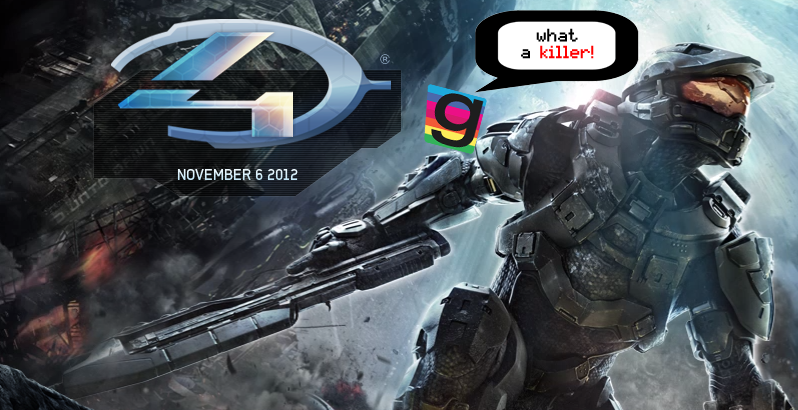
Amidst all the arguments about gamification’s off-putting nomenclature, trivializing problems, and it not being about playing games, it would be a mistake to not at least consider the study of games as a point of reference to better understand gamification.
If you can accept Richard Bartle’s player types as a model for gamification player design, then recognizing those player types in the context of the video games they play can be very useful for designing gamified experiences.
Today marks the release of Halo 4, the fourth “true” iteration of the first person shooter game since its first release in 2001 on the original Microsoft Xbox system. The Halo series has always been impressive for its beautiful graphics, story, and single player campaigns but the true breadth of the Halo experience lies in the multiplayer competition. And you know who loves destroying the competition? Killers do. Lets take a look at some of the things in this game’s franchise and culture that makes it cater to the Killer type.
1) Balanced Gameplay with Powerful Weapons
One of my most memorable experiences with Halo was the moment I found the rocket launcher in Halo 1. There have been games with rocket launchers in the past but this particular rocket launcher had a particular heft to it. Successfully shooting a player with this power weapon guaranteed a kill and not just a normal kill. The force from the explosion would send the other player flying into the air with arms flailing about. The Halo series has iterated more and more of these weapons in future games in the series (Energry Sword, Spartan Laser, and Rail Gun) because they offer such a sense of enormous power to the player using them. However, the developers have always been smart to balance these weapons within the game, with their spawn times, limited ammo, and vulnerable spawn points.
Don’t be scared of overpowering a player for a moment in your gamified system but make sure this power isn’t held for too long or else you risk alienating those who aren’t as powerful.
2) Skill Rankings and Stats
Halo is set in a world of Space Marines and includes medals, badges, and rankings. The game has always prominently displayed these rankings in competitive ranked games so players know how they stack up against the competition. Halo 3 also made the interesting choice to have each player profile show what difficulty setting they beat the game on and the number of total ranked or unranked games they’ve played. Essentially, all this information for each profile allows killers to profile what kind of person they are playing against. The ability to quantify your enemy’s skill level is extremely valuable to a Killer, especially if they defeat them.
Prominently display the relative skills and levels of players in your system and give your players optional access to information that can give them more insight into their victories. If your player in New York just surpassed the #1 player in California, recognize them for that!
3) Epic Humiliations
If there’s anything killers would like more than ruthlessly defeating their opponents, it would be defeating and humiliating them while doing it. Killers will often go the extra-mile to defeat their opponents if it means they can run them over in an ATV as opposed to simply shooting them. There is more intrinsic value in defeating someone in that manner, even if it means that doing such an action causes your team to lose the game because you needed that same ATV to transport your squadmates. While the Halo developers don’t explicitly wish to promote this kind of gameplay, they recognize players appreciate the choice of being able to do so. For example, in Halo Reach, players have the option of killing another by either simply hitting another behind their back or “assassinating” an enemy in a drawn out sequence. The assassination does not confer any additional gameplay benefits; it actually makes the attacker more vulnerable for doing so but gives the player an opportunity to achieve sweet humiliation. And of course, you can’t talk about humiliation in Halo without mentioning the infamous tea bag.
Give your Killers the option to defeat their opponents in creative ways and recognize them in your system if they choose to do so. Just be wary of revolving your entire system around this otherwise players might lose sight of the system’s real objectives.
These are just a few of the many things in the Halo universe that appeal to Killers in the system. There are far more examples that span across the Halo games and countless other games on other platforms but the best way to really learn about them is to try playing these games. Kevin Werbach max-leveled a character (read: days worth of playtime) in World of Warcraft to get a better understanding of the systems in place.
Don’t be scared to dive into games you aren’t familiar with – that’s the whole point right?







